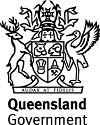Published Thursday, 10 November, 2016 at 10:24 AM

Minister for Environment and Heritage Protection and Minister for National Parks and the Great Barrier Reef
The Honourable Steven Miles
Palaszczuk Government funds council projects to cope with climate change
The Palaszczuk Government has announced the first three local governments to benefit from its $12 million QCoast 2100 fund to help coastal communities prepare for the impacts of climate change.
Environment Minister Dr Steven Miles said today Moreton Bay Regional Council, Noosa Shire Council and Whitsunday Regional Council had each submitted strong applications for a share of the funding, which is available to all coastal councils.
“The Councils will now each develop a Coastal Hazard Adaptation Strategy for their area based on an assessment of the specific local conditions and challenges which they need to meet,” Dr Miles said.
“I encourage all other eligible councils to get on board and follow the lead in taking action on climate change.
“The previous LNP government banned all mention of the words climate change and removed sea level rises from planning policy causing a legal and insurance nightmare. We are returning certainty for local governments.”
The QCoast2100 program is being administered by the Local Government Association of Queensland which is working with eligible councils to support their proposals and assist them in preparing potential projects.
LGAQ President Mark Jamieson said the QCoast2100 program was intended to encourage affected councils to work together to minimise the risks.
“Wherever possible we encourage local governments to work together, sharing knowledge and resources to strengthen resilience right along the Queensland coast,” Mayor Jamieson said.
“The emphasis for the QCoast2100 program is very much on helping coastal communities plan and prepare for coastal hazards such as storm tide flooding, coastal erosion and sea level rise.”
Moreton Bay Regional Council has received a QCoast2100 grant of $500,000 to develop a Coastal Hazard Adaptation Strategy after an initial high level assessment by Council identified a number of urban coastal areas at risk from coastal hazards as a result of climate change.
“These include Toorbul, Donnybrook, Beachmere, Dohles Rocks, Bribie Island and Redcliffe in the first instance, with more areas likely to be identified as the two-year project progresses,” Dr Miles said.
“Noosa Shire Council is looking to update and expand its previous work on developing a Coastal Hazard Adaptation Strategy and has been provided with $490,000 to assist with that work, also over two years.
“In particular Council has identified Noosa Heads, Noosaville and Tewantin as the focus of its project area.
“Together, these localities account for around three-quarters of Noosa’s resident population, tourists and much of the shire’s residential, commercial, industrial and environmental assets.”
Dr Miles said Whitsunday Regional Council had been granted $513,500 in QCoast2100 funding over two years to develop its Resilient Whitsunday: Coastal Hazards and Response project.
“Whitsunday Regional Council has more than 500 km of coastline with historical coastal hazards affecting Bowen, Airlie Beach and surrounds, and numerous smaller coastal communities,” Dr Miles said.
“WRC is also looking to update and expand its previous work on preparing for the impacts of climate change and it’s likely that other priority areas will also be identified as part of this two-year project.”
ENDS
MEDIA 0412 393 909

